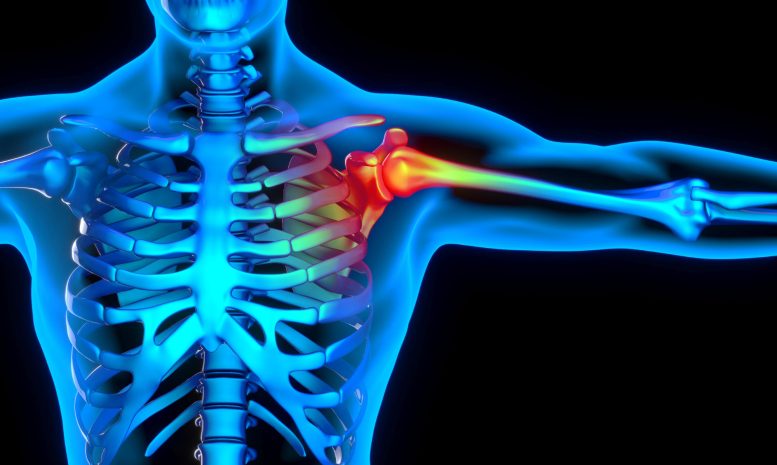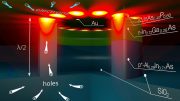
New research concludes that saline injections combined with ultrasound-guided lavage for treating shoulder calcific tendinopathy are no more effective than placebo treatments, challenging current treatment methods and underscoring the need for further investigation and alternative approaches.
The results of a recent trial suggest that the use of this treatment needs to be reevaluated.
A clinical trial recently published in The BMJ has found that a saline injection treatment commonly employed to treat calcific tendinopathy, a painful condition resulting from calcium accumulation in the shoulder’s rotator cuff tendons, offers no significant advantage compared to a placebo.
The study demonstrates that the perceived benefits of an ultrasound-guided lavage (a procedure where saline is injected into calcium deposits to dissolve them), even when combined with a steroid injection, are equivalent to those obtained from a sham (placebo) treatment.
The researchers say the findings question the use of ultrasound-guided lavage for this condition and should lead to “a critical reconsideration” of existing treatment guidelines.
Background and Methodology of the Study
Despite its widespread use, ultrasound-guided lavage has never been compared with sham treatment, so it’s unclear whether reported improvements are due to the treatment itself, natural recovery over time, or a placebo effect.
To fill this important evidence gap, researchers in Norway and Sweden carried out the first sham-controlled trial to test the true effect of ultrasound-guided lavage with a steroid injection for patients with calcific tendinopathy of the shoulder.
Their findings are based on 218 adults (average age 50; around 65% women) referred to six hospitals in Norway and Sweden between April 2015 and March 2020 with persistent symptoms of calcific tendinopathy for at least three months.
At the start of the trial, patients provided information on a range of health and lifestyle factors, and x-rays were taken to assess the size of their calcium deposits.
Patients were then randomly split into three treatment groups: lavage plus steroid injection (73), sham lavage plus steroid injection (74), and sham only (71). After treatment, all patients were asked to do a home exercise program.
Assessment and Findings
The main measure of interest was pain intensity and functional disability on the Oxford Shoulder Score (a 0-48 point scale) reported by patients after two and six weeks and four, eight, 12, and 24 months.
At four months, there was no significant difference in pain and functional limitation among the three groups. Scores remained similar at the later assessments, even in patients whose calcium deposits had disappeared, which the researchers say questions the view that dissolving the calcium around the joint resolves symptoms.
Groups that included a steroid injection did report better pain relief than the sham group two and six weeks after treatment, but notably, the improvements at four months were no different than sham.
Observations and Recommendations
The researchers acknowledge several limitations, such as the absence of a no-treatment group to assess the natural course of the condition, but say the double-blind, three-arm design, including a sham group, allowed them to assess the true clinical effect of active treatment.
As such, they conclude: “Our results challenge existing recommendations for the treatment of calcific tendinopathy and may necessitate a critical reconsideration of established treatment concepts for these patients.”
Future studies should investigate alternative treatments such as defined physiotherapy programs and should include a no-treatment group to assess the influence of the natural course of calcific tendinopathy on the results, they add.
In a linked editorial, US researchers say lavage seems to be overused and may not be as effective as we thought. However, concluding that ultrasound-guided lavage or subacromial corticosteroid injection no longer has a role in treating calcific tendinopathy of the shoulder would be premature.
These new findings “will inform discussions with patients and provide some reassurance to those with a similar, long symptomatic course that time will help and corticosteroids may facilitate short-term pain relief,” they add.
And they suggest that future studies should include a sham control group, assess treatment response earlier in the symptomatic course, and explore whether ultrasonographic classification systems can better predict treatment response.
Reference: “Ultrasound guided lavage with corticosteroid injection versus sham lavage with and without corticosteroid injection for calcific tendinopathy of shoulder: randomised double blinded multi-arm study” by Stefan Moosmayer, Ole Marius Ekeberg, Hanna Björnsson Hallgren, Ingar Heier, Synnøve Kvalheim, Niels Gunnar Juel, Jesper Blomquist, Are Hugo Pripp and Jens Ivar Brox, 11 October 2023, BMJ.
DOI: 10.1136/bmj-2023-076447
The study was funded by the Bergersen Foundation, the Aase Bye and Trygve J.B. Hoffs Foundation, Smith and Nephew, and the Medical Research Council of Southeast Sweden.









It’s fairly irritating to see a publication that is supposedly about science using “sham” instead of placebo.
In this case, sham is correct and placebo is not. When a trial involves a procedure, both the treatment and non-treatment group need to undergo a procedure or it will be pretty clear which is which. If you were removing a kidney, one group would have the real operation to remove the kidney and the other group would have the same operation, except the kidney would not be removed. This is referred to as a ‘sham’ operation. Mostly this is done with animals rather than people.